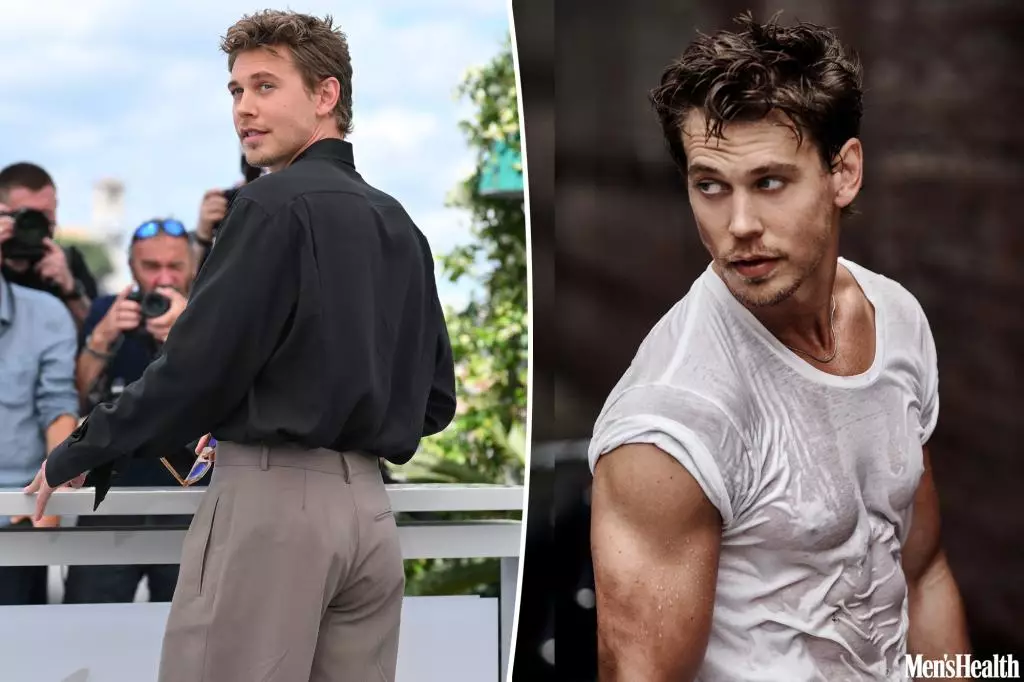Austin Butler’s recent transformation demonstrates not just a physical overhaul but a strategic mastery of body manipulation to serve a cinematic purpose. Unlike conventional actors who often rely on minimal changes, Butler’s meticulous approach underlines an intense dedication to authenticity—an effort that pushes beyond superficial appearance to embody characters fully. His commitment also reveals the industry’s increasing demand for actors to physically embody their roles convincingly, highlighting a willingness to embrace unconventional routines in pursuit of artistic excellence.
Butler’s focus on developing a “thicker” posterior—an often overlooked feature—shines a light on how gendered body ideals influence character portrayal. While many male actors aim for muscular or chiseled physiques, Butler’s goal was to achieve a perky, baseball-player-inspired backside. This choice underscores how body stereotypes extend beyond superficial aesthetics into character authenticity, demonstrating that physical traits serve specific narrative and visual purposes.
Furthermore, Butler’s openness about this body transformation challenges societal notions around masculinity and body image. His willingness to embrace a traditionally “feminine” attribute—changing physical proportions for a role—subverts rigid gender standards and signals a broader cultural shift toward fluidity in body representation. These actions underscore the importance of authenticity in storytelling, illustrating that physical authenticity can elevate a character beyond words and scripts.
The Art of Balance: Combining Discipline With Culinary Indulgence
What distinguishes Butler’s transformation is his calculated approach to balancing intense workouts with dietary indulgence—specifically pizza and beer. This highlights an understanding that sustainable change extends beyond strict diets or punishing routines. Instead, it involves a nuanced interplay of discipline and moderation, both of which are pivotal in realistic body transformations.
His training regimen, crafted with celebrity trainer Beth Lewis, reflects a strategic focus on targeted exercises such as hip thrusters, balancing on BOSU balls, and kettlebell routines. These choices are not accidental; they are selective tools aimed at sculpting specific muscles to meet the film’s aesthetic needs. Additionally, his dramatic weight gain from 150 to 185 pounds showcases an aggressive, purposeful approach to body modification that counters the often stereotypical portrayal of actors as static physical entities.
However, Butler’s candid acknowledgment of consuming pizza and beer—even to simulate a “drinking problem”—entails an important message: authenticity and relatability are rooted in vulnerability and honesty. His refusal to adhere to a purely restrictive diet humanizes him, reinforcing that true dedication is about intentional compromise rather than perfectionism. This perspective can inspire many aspiring actors and fitness enthusiasts to pursue their goals in a sustainable, psychologically healthy manner.
Body as a Canvas: Redefining the Performance of Masculinity
Butler’s physical metamorphosis interrogates traditional masculinity, particularly the emphasis on lean, cut bodies that dominate western media. Instead, he embraces a more nuanced archetype: a baseball player with a prominent, shapely backside—an attribute seldom highlighted in male actors but reflective of authentic athletic physiques. This choice could mark a cultural shift, suggesting that strength and aesthetic appeal can coexist with a curvier, less stereotypical male form.
The actor’s visible commitment extends beyond aesthetics; it underscores a broader idea that masculinity does not need to be confined to rigid standards. His transformation invites audiences to reconsider what physicality means in the context of portrayal and performance. It also signals that body image is ultimately a personal statement, shaped by purpose, context, and narrative necessity, rather than societal expectations alone.
Moreover, Butler’s readiness to embrace a form that is traditionally considered “less masculine” demonstrates the importance of authenticity in the acting craft. By physically embodying the character’s distinctive traits, he reinforces the idea that true acting involves more than mimicry; it requires total immersion into the physical and emotional fabric of the role.
Culture, Connection, and Celebrity: The Dynamic Off-Screen Narrative
Alongside his astounding physical transformation, Butler’s romantic interactions with Zoë Kravitz fuel the intrigue surrounding his personal life. Their relationship—developing publicly amid rumors, sightings, and speculation—reflects today’s cultural obsession with celebrity narratives intertwined with professional careers. These social dynamics can influence an actor’s public perception, often humanizing figures who might otherwise seem distant or overly curated.
Yet, it’s crucial to recognize the distinction between authentic personal expression and media-driven sensationalism. Butler and Kravitz’s discreet relationship approach suggests a desire for genuine connection beyond Hollywood’s voyeurism, indicating a maturation in how celebrities navigate their private lives in the age of social media.
In essence, Butler’s career is not only about physical transformation but also about navigating and reshaping his perceived identity in a hyper-visible environment. His willingness to push physical and emotional boundaries exemplifies a holistic approach to artistry—one where authentic self-expression weaves through everything, from body image to personal relationships.

